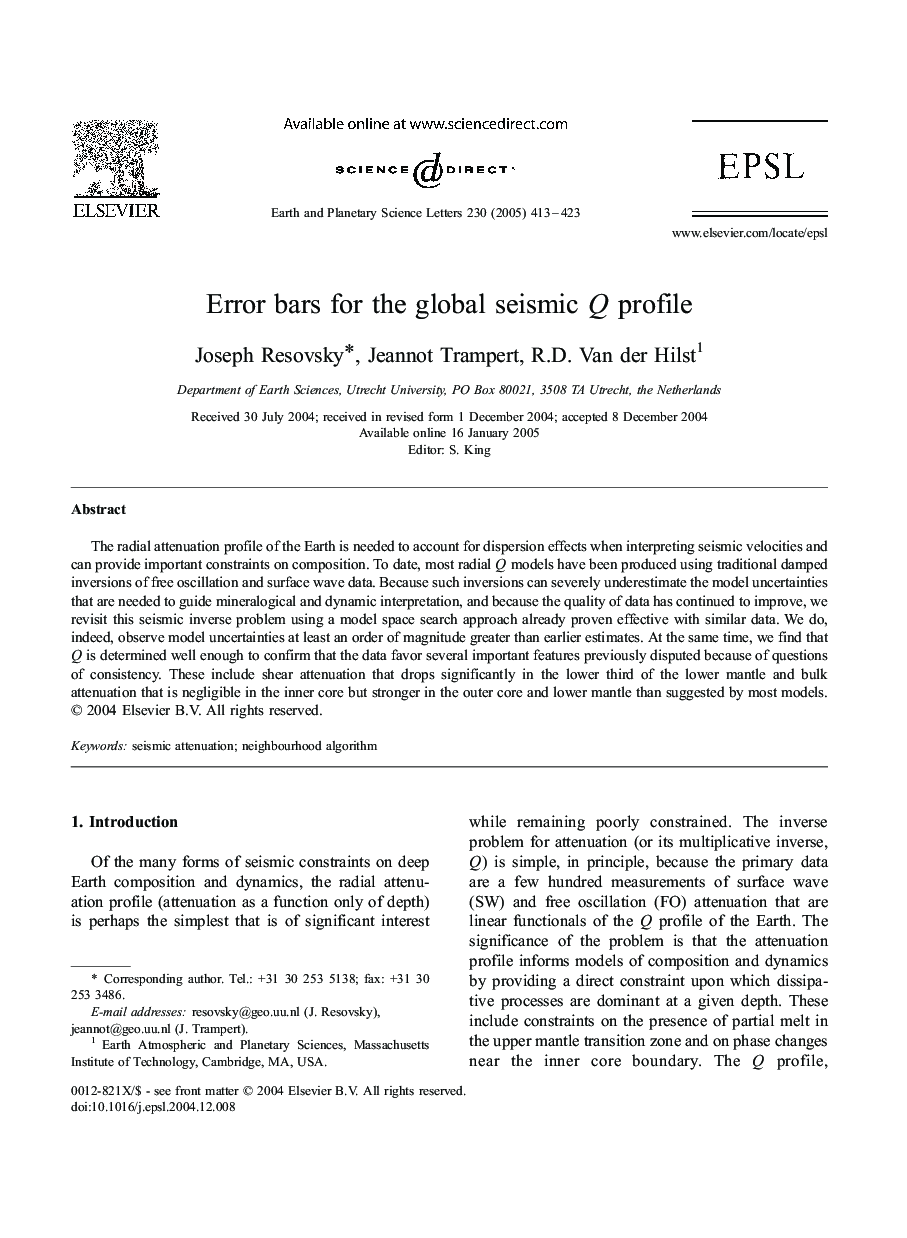| Article ID | Journal | Published Year | Pages | File Type |
|---|---|---|---|---|
| 9522353 | Earth and Planetary Science Letters | 2005 | 11 Pages |
Abstract
The radial attenuation profile of the Earth is needed to account for dispersion effects when interpreting seismic velocities and can provide important constraints on composition. To date, most radial Q models have been produced using traditional damped inversions of free oscillation and surface wave data. Because such inversions can severely underestimate the model uncertainties that are needed to guide mineralogical and dynamic interpretation, and because the quality of data has continued to improve, we revisit this seismic inverse problem using a model space search approach already proven effective with similar data. We do, indeed, observe model uncertainties at least an order of magnitude greater than earlier estimates. At the same time, we find that Q is determined well enough to confirm that the data favor several important features previously disputed because of questions of consistency. These include shear attenuation that drops significantly in the lower third of the lower mantle and bulk attenuation that is negligible in the inner core but stronger in the outer core and lower mantle than suggested by most models.
Related Topics
Physical Sciences and Engineering
Earth and Planetary Sciences
Earth and Planetary Sciences (General)
Authors
Joseph Resovsky, Jeannot Trampert, R.D. Van der Hilst,
